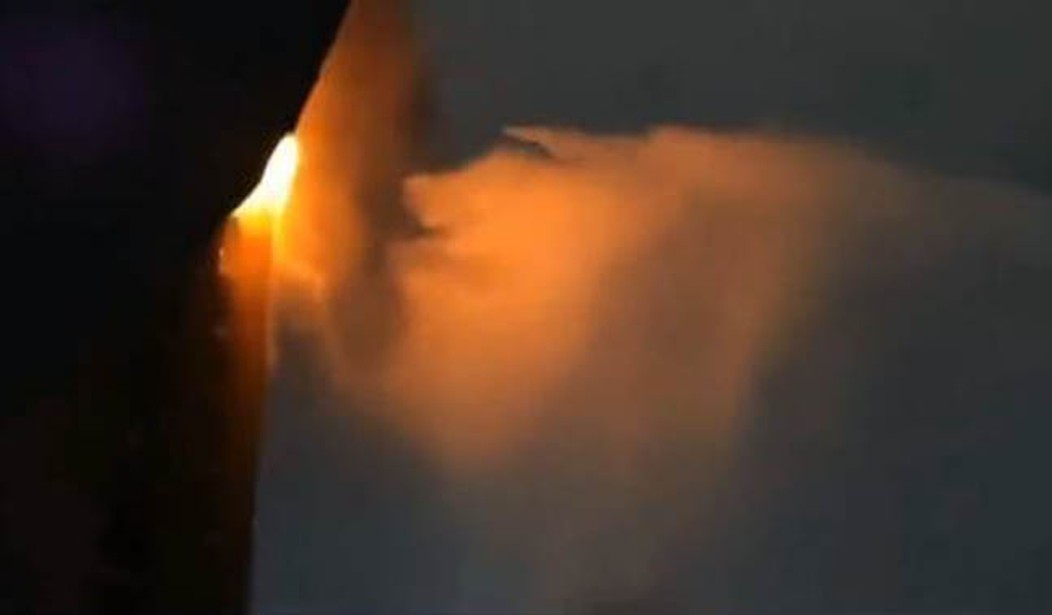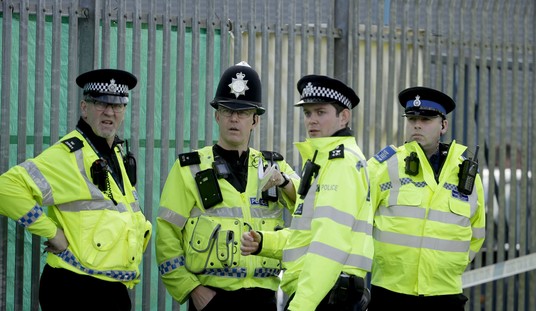The truth of what happened here is already being heavily suppressed in China but it certainly looks like a deadly high-rise fire that killed at least 10 people in Xinxiang China could not be put out quickly in part because of zero-COVID lockdowns which have been in place in the region for months.
The fire happened Thursday night in Urumqi the capital of Xinjiang. Firefighters weren’t able to get their trucks close to the building, allegedly because streets were blocked by parked cars. This video shows a jet of water from a fire truck that isn’t quite reaching the burning building.
Urumqi, Xinjiang, roadblocks were placed in the community to prevent residents and vehicles from entering and exiting, making it difficult for firefighters to put out the fire even if they tried their best.#TheGreatTranslationMovement pic.twitter.com/3nIKH6YeYT
— The Great Translation Movement 大翻译运动官方推号 (@TGTM_Official) November 25, 2022
A translation of this tweet reads: “On November 24, at 7:45 p.m. in Urumqi, a fire broke out on a high-rise building and fire trucks could not get in. The iron sheet was removed until 10:00 p.m., dragging for 3 hours, and 10 people died. Another disaster!”
11月24日 乌鲁木齐 晚上7点45分一高层发生 火灾 消防车进不去,拆铁皮拆到10点,拖了整整3个小时,死了10人 。又造成一起人祸! pic.twitter.com/XkD0DuMfVL
— 老司机 (@h5LPyKL7TP6jjop) November 25, 2022
There’s another video of a woman screaming for help from inside the building.
Serious situation in China tonight with protests in several cities after a video from the high-rise fire killing 10 in Urumqi (Xinjiang) went viral.
800 million people have seen the video of people pleading for help before dying.
Lockdown measures blamed pic.twitter.com/Qr5ypMrnVz
— Visegrád 24 (@visegrad24) November 25, 2022
Local residents blamed the lockdown which they say made it difficult for people to leave their apartments. Some reports also claimed the cars blocking access to the compound couldn’t be moved either because people couldn’t leave their apartments to move them or because they’ve been locked down so long (since August) that many of the cars had dead batteries. In this BBC report you’ll that what authorities are claiming doesn’t match up with what local residents are saying.
State media said the compound had been categorised as low risk for Covid and residents were able to go downstairs.
But a resident told the BBC people were only allowed to leave their homes for short periods each day and the timing was controlled by authorities…
One man in a residential compound near where the fire happened told the BBC that even in low-risk compounds in Urumqi, residents still had to follow directions from local officials about when they could leave their apartments for a short period of exercise each day.
He said he had been following a stay-at-home order since 7 August.
“We Xinjiang people don’t dare to go downstairs without permits as it will violate the law even if the building gate is not locked,” he said.
“After the accident yesterday, we are now wondering whether we should still follow the official’s notice in the WeChat group,” he added.
The NY Times says there are also reports that the status of that compound had recently been upgraded to a level which may have made it difficult for people to leave:
…many Chinese internet users were skeptical of the official account. They shared what appeared to be screenshots of conversations between the government and residents of the Jixiangyuan community indicating that the compound had recently been placed under a stricter level of lockdown, which could have made it harder for residents to get to safety…
…the descriptions of residents possibly sealed into their homes or compounds fit a broader pattern of how such lockdowns have been enforced in many parts of the country. Makeshift barricades and bolted doors have become a key feature of efforts to prevent people who might have been exposed to the virus from leaving their homes and buildings.
What is certain is that by Friday night angry residents had decided to ignore whatever orders were being issued to remain at home and gathered in the streets to confront the police and demand an end to lockdowns.
Demonstrators to #Chinese police:
"People's police should serve people!"
"Don't you guys have parents? Don't you guys have children? So many kids died, Don't you guys own any conscience?" #Urumqifire #UyghurGenocide #China #EastTurkistan #Xinjiang pic.twitter.com/iDG3g2IFKY— Uyghur from E.T☪ (@Uyghurspeaker) November 25, 2022
People in #Urumqi, #Xinjiang continue to march to city hall demanding justice. Ppl now are saying that the local govt has lied about the death toll. They say more than 100 have died as result of that fire. The word 起义 uprising is used on WeChat. We'll see how long it stays up. pic.twitter.com/BTunznBywp
— Karen Woods 林爷 🇺🇦🇨🇦🌻 (@KarenWenLin) November 25, 2022
Chinese authorities are in full cover-up mode, even blaming the dead for their own failure to escape. Of course that only made people angrier.
The city’s mayor apologized and promised an investigation into the cause of the fire at a news conference on Friday evening. Li Wensheng, head of the fire rescue brigade, denied that coronavirus restrictions impeded the response, instead blaming a narrow lane filled with parked cars for obstructing access for the firetrucks.
“Some residents’ ability to rescue themselves was too weak … and they failed to escape,” Li said. He also disputed claims made online that residents were not permitted to leave or fire escape doors were locked.
The official response only spurred online outrage, with many continuing to blame the government’s strict covid policy. Critics said it was inappropriate for authorities to shift blame to the victims and argued that centralized quarantine rules had caused vehicles to be abandoned on the street…
Online criticism over the Urumqi fire appeared to briefly overwhelm censors, as it did after the death of Li Wenliang, the Wuhan doctor who tried to raise the alarm in late 2019 about the then-unknown coronavirus but was reprimanded by police.
The censors recovered and by Saturday the videos of the fire and of the street marches Friday night had been pulled down but only after hundreds of millions of views. Here’s a clip showing some of the protests.
China recently announce plans to “fine tune” the zero COVID response but since then the number of cases has gone up substantially.
China reported 35,183 new COVID-19 infections on Nov. 25, of which 3,474 were symptomatic and 31,709 were asymptomatic, the National Health Commission said on Saturday, setting a new high for the third consecutive day.
That compared with 32,943 new cases a day earlier – 3,103 symptomatic and 29,840 asymptomatic infections, which China counts separately.
As you can see, most of these cases are asymptomatic and very few deaths have been reported. At this point, it’s not clear why China is still sticking with draconian lockdowns except that it’s trying to hold on to an image of China as having the best pandemic response. But as this story demonstrates that record comes at the expense of the freedom of tens of millions of people who are either to afraid or simply unable to leave their apartments even when the building is on fire.








Join the conversation as a VIP Member